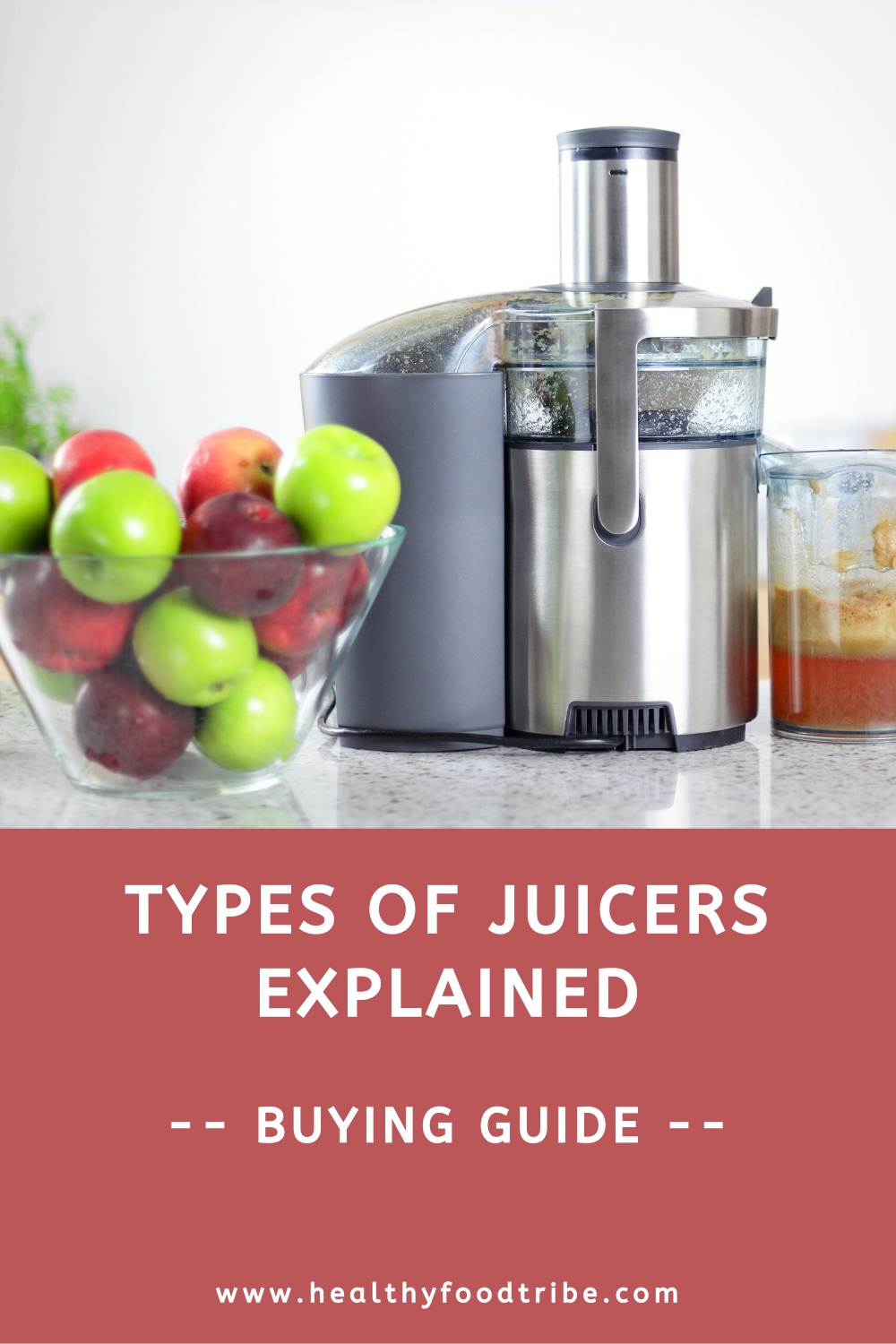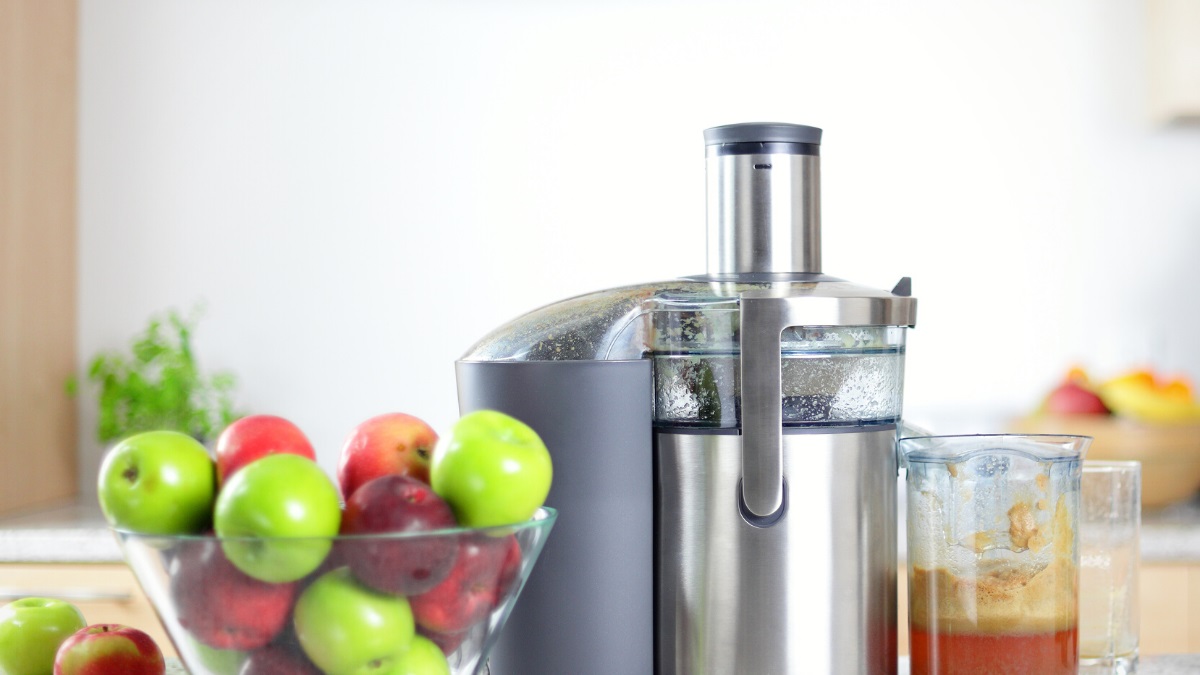I may earn a small commission from purchases made through product links on this website at no extra cost to you. As an Amazon Associate I earn from qualifying purchases.
Last updated: February 19, 2024
A complete juicer buying guide with an outline of the different types of juicers that exist and the pros and cons of each.
Whether you’re a juicing veteran or completely new to juicing, buying the right juicer for your needs can be quite challenging with so many different types of juicers available. Centrifugal vs cold press, slow vs fast juicing, masticating vs triturating, the world of juicing is more complicated than you might think.
In this juicer buying guide, I will explain the differences between the various types of juicers to help you make an informed decision when purchasing a new juicer.
Types of juicers:
1. Centrifugal Juicer
The most common and most popular type of juicer is the centrifugal juicer. It’s usually also the most affordable, readily available in any department store.
Centrifugal juicers use a sharp cutting blade to chop up the fruits and vegetables before spinning at high speed, using centrifugal force to separate the juice from the pulp. The pulp and juice end up in different containers.
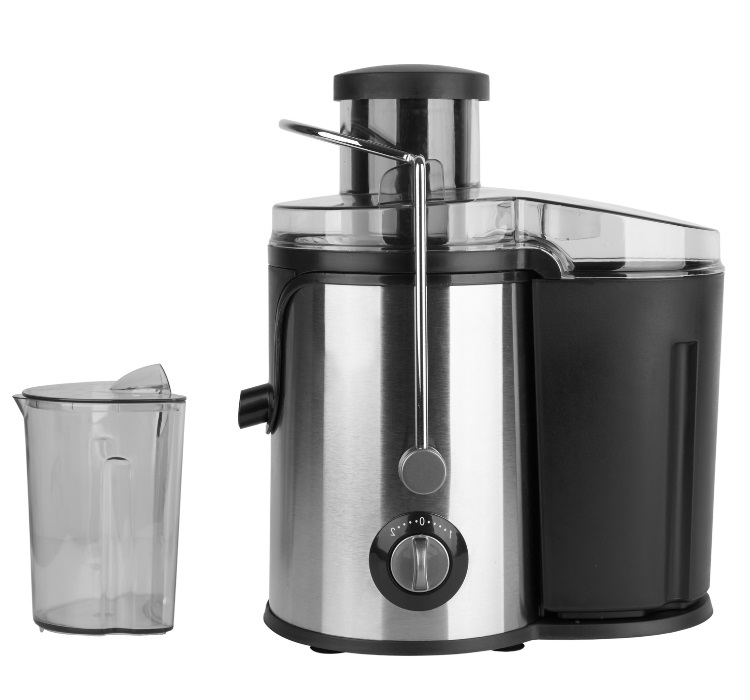
The fast-spinning blade generates heat, which some say negatively impacts the nutritional value of the fruits and veggies being processed. This is why cold press juicers are often preferred (see below) over centrifugal juicers.
The other drawback is that spinning is not the most efficient way of extracting juice. It typically doesn’t result in a lower juice yield than with cold pressing.
There are typically two types of centrifugal juicers: with an external container or without one. The ones with an external container tend to be more expensive, but the extra investment is worth it.
An extra container allows you to juice in large batches, making the whole process much more time-efficient. Plus, you can use the container to store the nutritious pulp for later use.
For more details about this juicer type, read my guide to the best centrifugal juicers with reviews of some of the best models available. And read my review of the Breville 800JEXL Juice Fountain Elite, one of my favorite centrifugal juicers.
Top selling centrifugal juicer:
- The Breville Juice Fountain Elite lets you embrace the power of professionals; A...
- UNIQUE EXTRACTION SYSTEM: The Breville juicers titanium reinforced disc and...
- SHORT PREP TIME: The Breville juicer machines unique 3 inch extra wide chute...
2. Masticating Juicer
Masticating juicers are also known as slow juicers. They use a single gear (also called an auger) to first crush your produce into pulp before extracting the juice.
This masticating process breaks down the cell walls of fruits and vegetables, resulting in more nutritious juice and less pulp. Mastication essentially means chewing, grinding, and crushing.
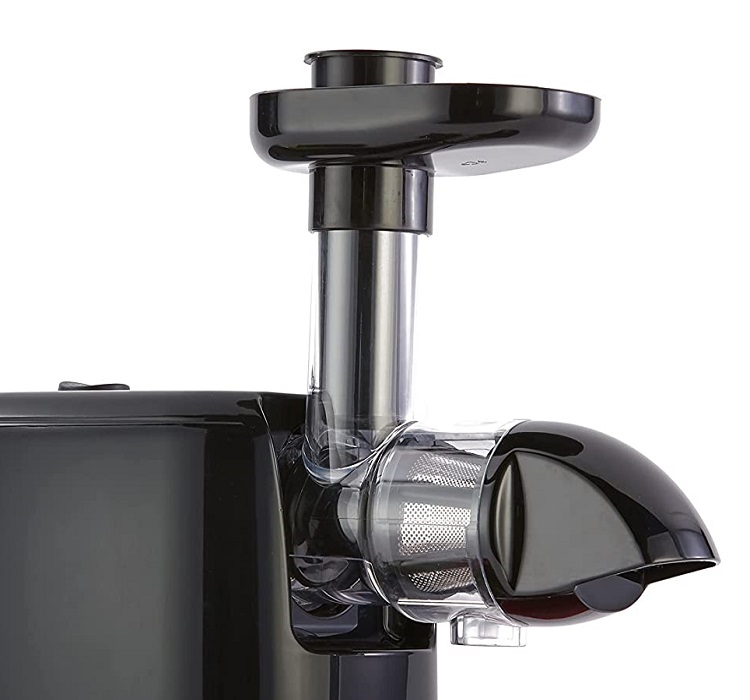
Masticating juicers produce no heat in the process. A drawback is that preparing juice with a masticating juicer takes a bit more time than with a centrifugal juicer, as you need to make sure that your produce is finely chopped.
There are typically two types of masticating juicers: vertical and horizontal juicers. The biggest difference is the amount of space they claim on your kitchen countertop. Vertical masticating juicers tend to be more expensive because of their design, but performance-wise, there isn’t much difference between them.
Read my guide to the differences between masticating and centrifugal juicers with an outline of the pros and cons of each.
Top selling masticating juicer:
- Cold Press Slow Juicer: This juice maker machine operates at a slow 43 RPM and...
- Max Flavor & Nutrients: This electric juicer uses Slow Squeezing Technology...
- High Yield: Equipped with a dual-edge auger with a tighter fit tolerance, this...
3. Triturating Juicer
Also known as twin gear juicers, triturating juicers are essentially the top-of-the-line juicers in the market. They use twin gears to crush and extract juice from produce.
These gears rotate inwards, perfectly crushing your fruits and vegetables into dry pulp, leaving you with the best and most nutritious juice. They are called triturating juicers because of the efficient grinding process to break down produce into juice and fiber.
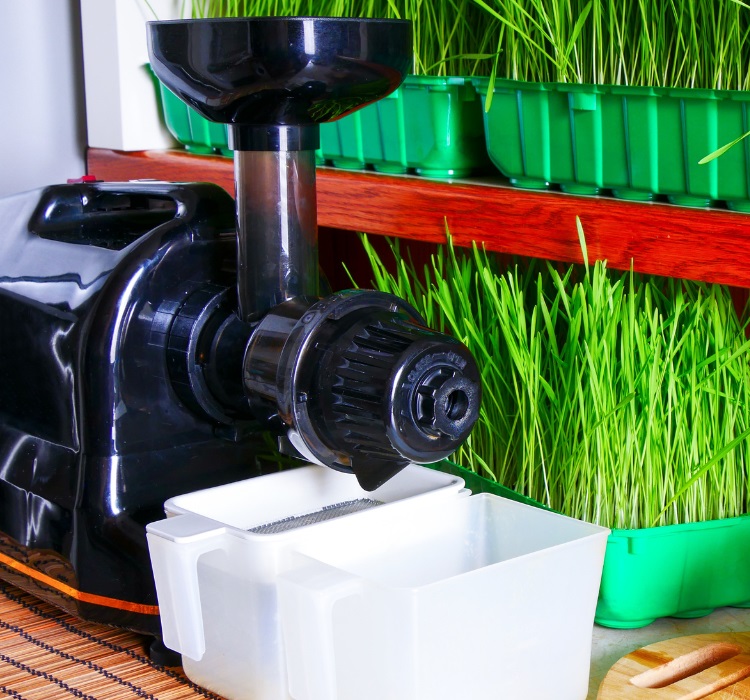
Triturating juicers are powerful and versatile (you can juice pretty much everything), and they generate no heat while juicing.
Like masticating juicers, juicing with a triturating juicer can be a bit more time-consuming because the process is quite slow.
Another drawback is that these types of juicers are typically a bit harder to clean because there are so many parts involved.
For more information about this juicer type, read my guide to the best triturating juicers with reviews of some of the best models available.
Top selling triturating juicer:
- ELECTRIC JUICE EXTRACTOR: Assures higher nutritional content and...
- PRODUCES FRESHER JUICE: Magnetic and bioceramic technology embedded in the Jumbo...
- VERSATILE CAPABILITY: Creates lovely recipes such as nut butter, sorbets,...
4. Cold Press Juicer
A cold press juicer can be both a masticating and triturating juicer. It simply means that no heat is generated during the juicing process. The terms slow juicer and cold press juicer are used interchangeably.
Cold pressing can perhaps be seen as a method of juicing rather than a type of juicer. It’s the opposite of what a centrifugal juicer does, which uses heat-inducing centrifugal force to abstract juice.
Top selling cold press juicer:
- NON-STOP JUICING: Powers through tough ingredients for powerful, non-stop...
- CONTROL PULP: Total Pulp Control allows for customized juice with two...
- PROGRAMS: 2 one-touch programs for simple use: Start/Stop and Reverse.
5. Manual Juicer
A manual juicer is a type of juicer that has no motor and works simply by using manual force. Manual juicers are most suitable for citrus fruits.
There are roughly three different types of manual juicers to choose from, each with pros and cons. I’ll talk about these three types of juicers below.
For more information about this juicer type, read my guide to the best manual juicers with reviews of some of the best models available.
1. Handle Press Juicer
A handle press juicer creates juice by pushing down a handle or a lever. This movement efficiently squeezes the juice out of fruits with a pressing mechanism.
A well-designed press juicer doesn’t require much physical force as the power is generated by the mechanics of the juicer.
Commercial-grade manual press juicers are used in cafes and restaurants serving fresh orange juice. They’re highly efficient and can create juices with great flavors and high yields.
2. Citrus Reamer
Using a reamer requires a bit more physical force. To use one, cut a (citrus) fruit in half, press, and rotate against the ribbed cone in the middle.
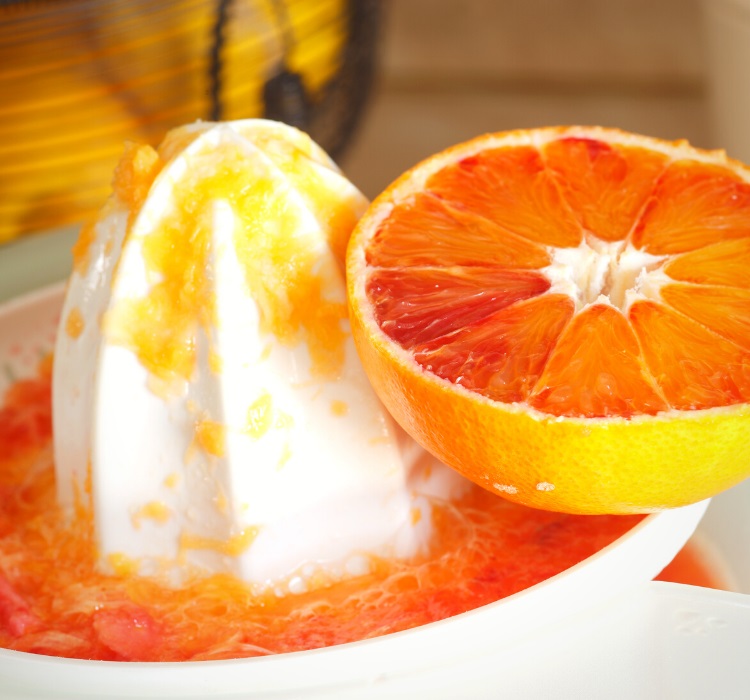
While a citrus reamer produces juice with some pulp, manual citrus reamers can create tasty juice very quickly. Cleaning is also a super quick and easy process.
3. Citrus Squeezer
A citrus squeezer is the most basic manual juicer. They’re small and basic but can very quickly create fresh juice.
The mechanics of a handheld citrus squeezer are essentially the same as those of a commercial-grade press juicer. Instead of rotating (one half of) the fruit as you do with a reamer, a handheld press juicer squeezes the juices out of the fruit by pressing.
The juice typically contains far less pulp than juice made with a reamer. Handheld squeezers are cheap, small, efficient, and easy to use and clean.
Blending vs juicing.
